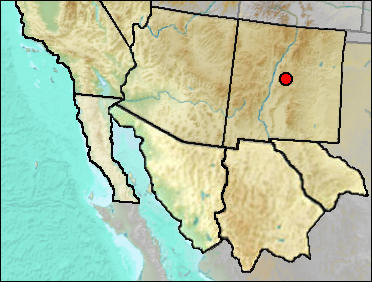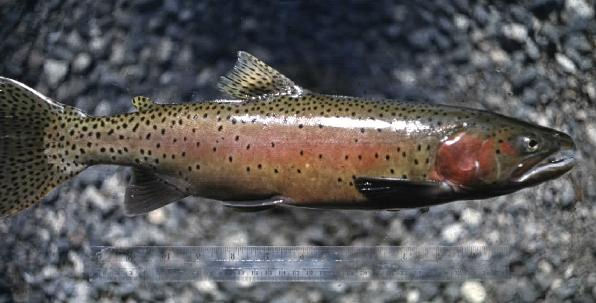Class Osteichthyes
Order Salmoniformes
Family Salmonidae

In New Mexico, Cutthroat Trout occurred historically in cold headwaters of streams and in cold lakes. Bachhuber (1989) reported fossils of Cutthroat Trout from several ages in the Estancia Basin. He considered that invasion from the Pecos River to the east likely occurred during overflow of Early Lake Estancia (pre-Illinoian or Illinoian), with the fish surviving in mountain headwaters to the west during subsequent times of lake drawdown. The fossils date from three phases of Late Lake Estancia and from the terminal Wisconsin (Lake Willard), with 14C dates between 24,300 ± 560 and about 12,460 ± 135 BP.
Behnke and Platte (1990) questioned the overflow hypothesis, noting that Cutthroat Trout have overcome barriers between basins by headwater stream capture, and thus presence of the trout in the Estancia Basin may be due to stream capture from the Rio Grande Drainage to the west. They suggest that if only the one species of fish is present in the Estancia Basin sediments, that this is the likely source since overflow to the Pecos should have allowed a number of species to invade.

Fig. 1. Cutthroat Trout (Oncorhynchus clarkii). US Fish & Wildlife Photograph.
Sites.
Illinoian or pre-Illinoian: Early Lake Estancia, Estancia Basin (Bachhuber 1989).
Late Wisconsin: Late Lake Estancia and Lake Willard, Estancia Basin (Bachhuber 1989).
Literature. Bachhuber 1989; Behnke and Platts 1990.
Last Update: 3 Nov 2008